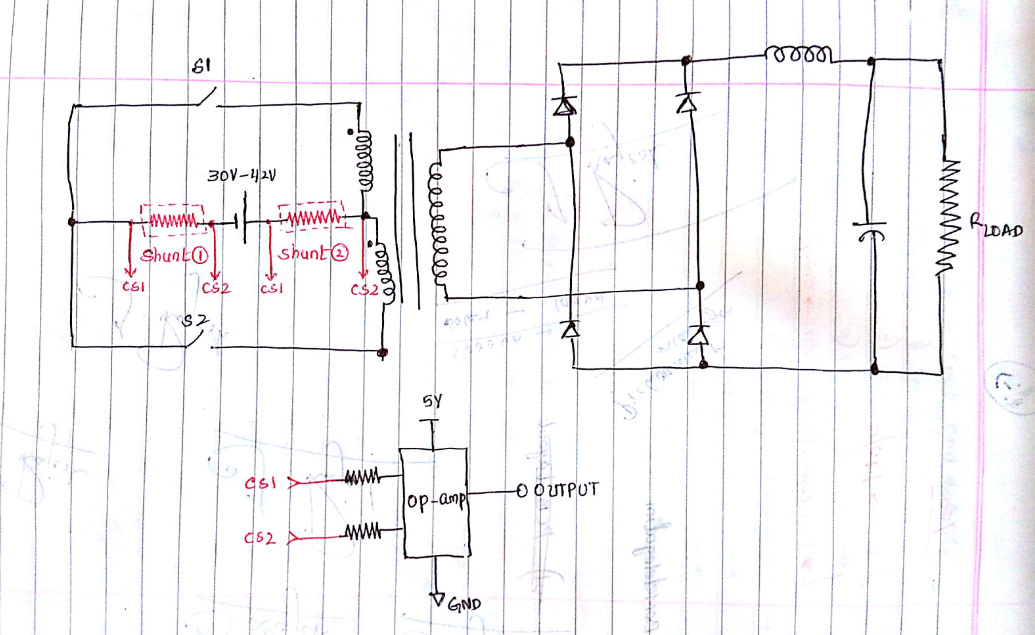Hi All,
I am building a 800W pushpull converter operating at 40kHz - 65kHz switching frequency with primary current going till max 100A. Converter input voltage on primary side can vary from 30-42V. See the circuit shown in figure below.
I want to implement peak current mode control for this converter. So, I used a shunt resistor of 1mOhm to sense the primary switching current. Shunt can be placed in two positions (1 - high side of battery or 2 - low side of battery).
In order to amplify the CS1-CS2 signal I used TLV271 op-amp (in case of low side sensing) but it is not able to reproduce the switching current signal. I need your help in finding the right op-amp for my application.
Thanks in advance!
Best Regards,
Kashyap Gundlapalli



